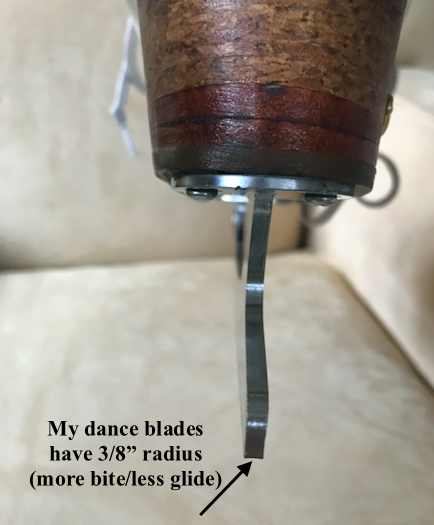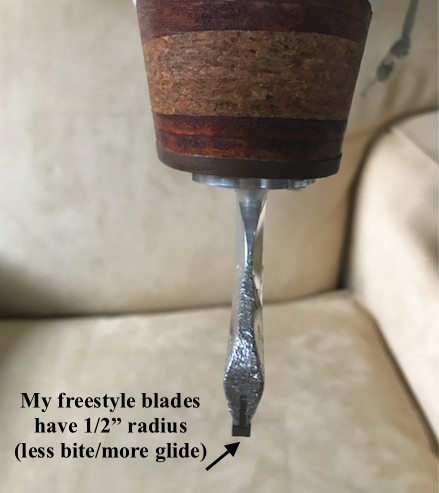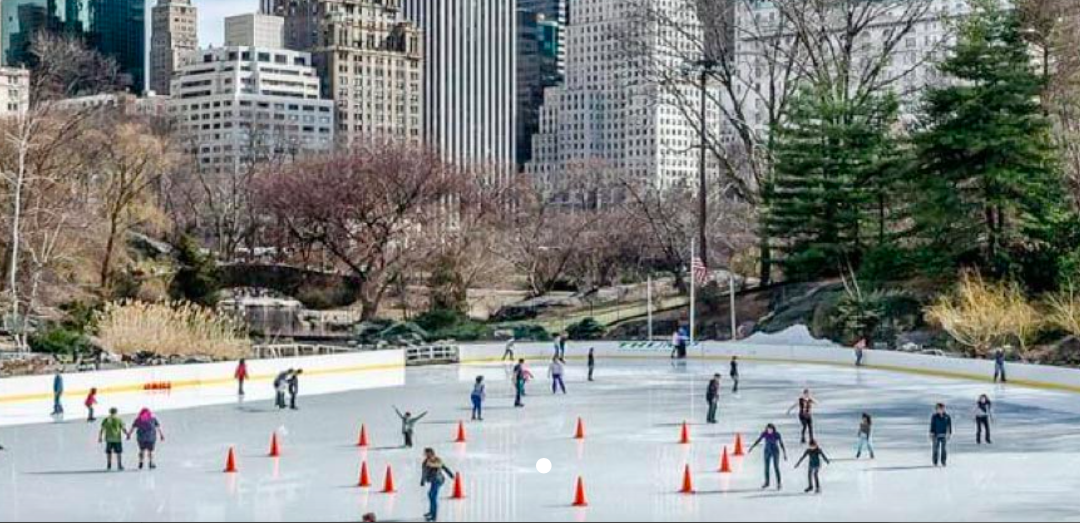Now that my students’ parents know when to sharpen their child’s skates, many have encountered a problem when asked “What radius of hollow do you want?” and confused what the ‘right’ answer should be.
Before I provide you some guidance on the radius of hollow used by beginner skaters, let me first explain what the term means. I won’t spend too much time going into detail because it can get very technical; however, I will try to give an overview so you have at least a basic understanding.
A blade’s hollow is the length running between the two edges on a blade or the curve that’s carved into the bottom of the blade. This shape is created by grinding the blade with a sharpening wheel. The size of your blade hollow has a significant impact on how you skate. You can have a deep or shallow hollow depending if you want more or less edge.
The depth of the hollow is determined by the radius. It’s called radius of hollow because the grinding stone that is used to sharpen your blade has a curve on it. This curve on the stone is formed from the radius of a circle which is the same curve that is used to shape the skate’s blade surface when sharpened- in the shape of a hollow. A smaller radius means a smaller circle which creates a deeper hollow, making the blades feel sharper and have more edge (or more bite).
A normal hollow is generally 1/2” to 1” (most beginners are 3/4” to 1”). A larger hollow is recommended for beginners because it gives the skater greater glide and speed since the edges are not digging deep into the ice. As your child’s skating improves and skills advance, you can go from a shallow hollow of 3/4“ to a deeper radius of 5/8” to 1/2”. I find the attached chart detailing the different radius of hollow a handy reference to have in figuring out what measure has less/more bite and glide. Also, I find the diagram below to be helpful- it’s not drawn to scale but is exaggerated to help show the difference between the radius of hollow for the specific measures.
My figure skate blades have 1/2” hollow which gives me a good balance of having a sharp feel and edge along with more glide and speed. Contrary, my dance blades have a deep 3/8” hollow (most ice dancers have 7/16”- 3/8” hollow) because it’s critical for me to perform intricate footwork and deep edges and turns. The only drawback with a deep hollow is that you don’t get as much speed and so you have to work harder to get more glide. Also, the deeper the hollow, the more often you have to get the blades sharpened to maintain the edge. That’s why I get my dance skates sharpened much more frequently than my freestyle skates. It’s always an adjustment for me switching back and forth to these different skates but I feel its what’s appropriate for me in these two different skating disciplines. The two diagrams that I’ve attached show the different radius of hollow in my freestyle and dance blades. It’s difficult to see because it’s only 1/8” of a difference but my dance blade has a deeper hollow.
As your skating level changes, you will require a different radius of hollow so you’ll need to experiment and find the measure which works best for you. It took me almost a whole year before I determined what radius I was most comfortable with so don’t worry as you and your child will find the ‘right’ hollow.













